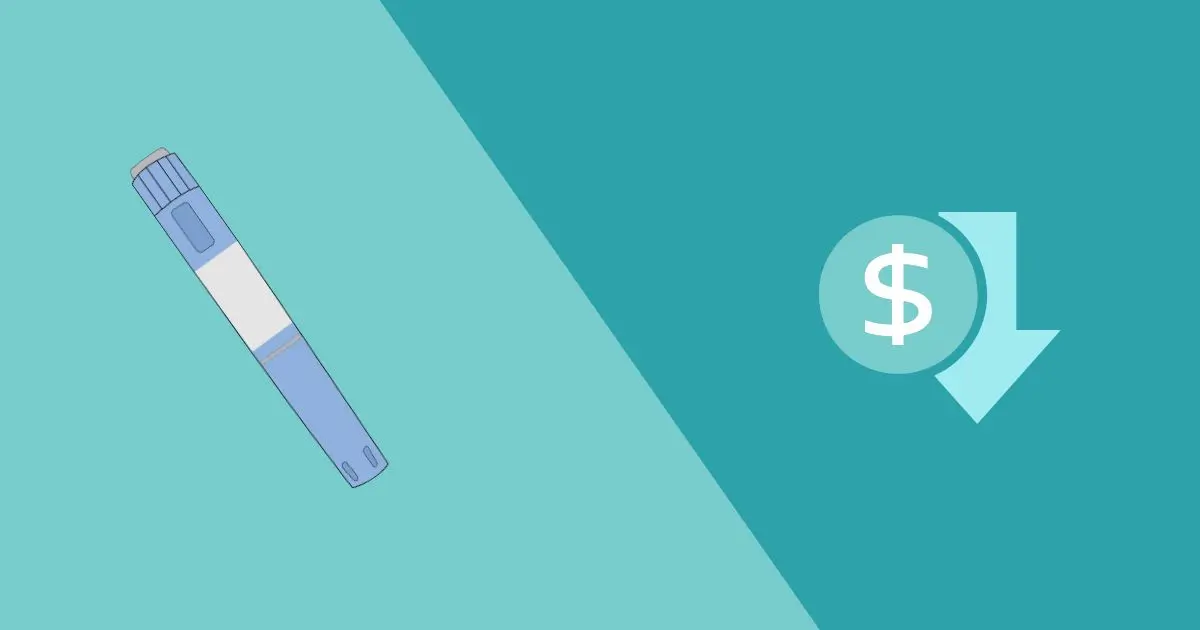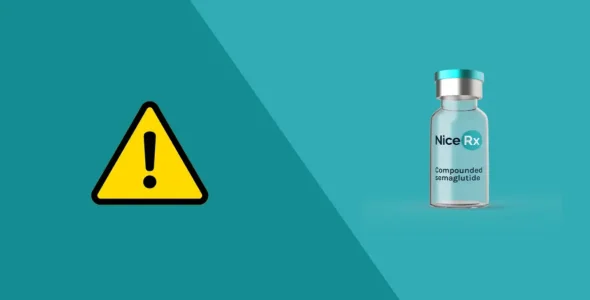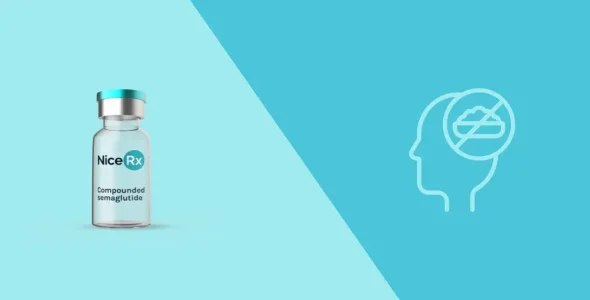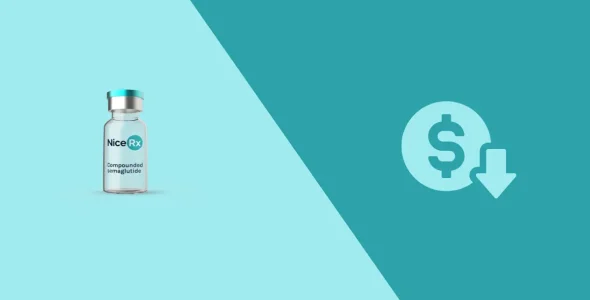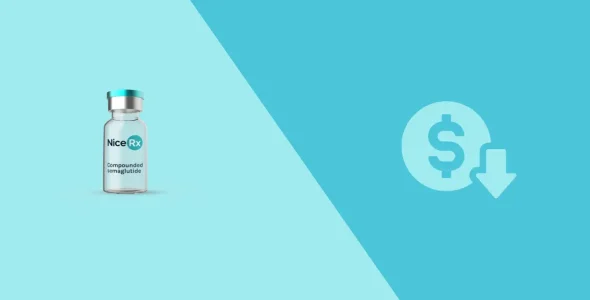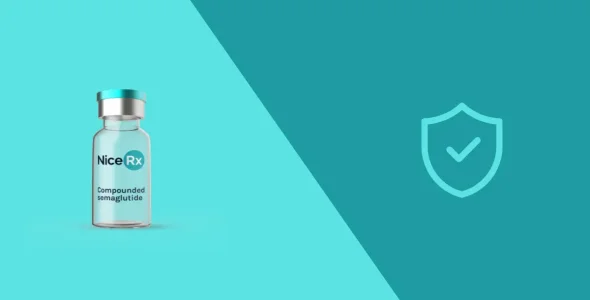Semaglutide generic: What you need to know (2025 update)
The drug that revolutionized weight loss and diabetes care still has no generic version, but why? And what can you do about costs today?
Key highlights
- As of 2025, there is no FDA-approved generic semaglutide in the United States, but alternatives and cost-saving options exist.
- An FDA-approved generic version of semaglutide won’t be available until at least 2032 because the drug is still protected by a patent.
- On July 22, 2025, Viatris won a major legal victory in its patent litigation dispute, potentially accelerating the entry of a biosimilar or generic version of Wegovy before 2032.
- Some pharmacies sell compounded versions of semaglutide as alternative options for patients that require custom dosing or formulations, but the FDA does not approve these medications.
- Talk to a healthcare provider before considering compounded semaglutide.
Semaglutide is a breakthrough treatment for type 2 diabetes and weight loss in people who are obese or overweight when combined with a healthy diet and exercise.
Semaglutide is the main ingredient in brand-name drugs like Wegovy, Ozempic, and Rybelsus. They all work the same, but your healthcare provider will choose the best one for your needs.
Semaglutide targets GLP-1 receptors in the brain that regulate appetite and slow down how quickly the stomach empties, making you feel fuller for longer.
Many people want a generic version of semaglutide because the brand-name drug can be expensive and may be unaffordable for some.
Keep reading to find out the current situation with semaglutide and what might change in the next few years for people looking for a generic version. Knowing your options can help save you money.
Is there a generic semaglutide in the United States? (2025 update)
As of April 2025, there is no FDA-approved generic version of semaglutide (the active ingredient in Ozempic and Wegovy) available in the United States. Novo Nordisk’s patents on semaglutide expire in December 2031, which is the earliest a generic could be marketed in the U.S.
Sandoz has announced plans to launch generic Ozempic and Wegovy in Canada in 2026, but the generic will not be available in the U.S. until at least 2032.
Compounded semaglutide has been available in the U.S. during drug shortages and when the patient needs a custom formulation that is not commercially available. It is not considered a generic drug.
Patients looking for more affordable options should talk to their healthcare provider. The FDA has also approved a generic version of liraglutide (Victoza/Saxenda), another GLP-1 medication that helps with blood sugar levels and weight management, which may be an option for some people.
Current FDA status
Semaglutide (Ozempic/Wegovy) is patent-protected by Novo Nordisk (29 patents) until at least 2026. No authorized generics are available in the United States at this time.
When will generic semaglutide be available in the United States?
A generic drug is a lower-cost version of a brand-name drug with the same active ingredient that must undergo FDA approval to prove its bioequivalence, dosage, safety, and effectiveness.
Novo Nordisk holds 29 patents protecting semaglutide (Ozempic/Wegovy/Rybelsus) in the U.S., with key patents expiring as late as 2033. A generic entry may be possible by 2026 if legal challenges succeed or patents expire earlier.
Because semaglutide is a biologic, future versions may be regulated as biosimilars, not traditional generics, requiring additional clinical data and a longer approval process.
Initial generics or biosimilars may come in vial form before pen injectors. Expect limited availability at first, then broader options as competition increases.
Factors that could delay generics may include:
- Legal battles: Ongoing patent litigation between the brand-name company and generic manufacturers could delay generic or biosimilar approval even after patents begin to expire.
- Manufacturing challenges: Semaglutide is a peptide-based drug, requiring complex synthesis and sterile production, which limits who can make it at scale.
- Biologic complexity: Unlike small-molecule drugs, semaglutide is a biologic, meaning any generic version would likely be a biosimilar, which involves a more complicated manufacturing process that is highly regulated and more expensive than manufacturing generic drugs.
Semaglutide Patents
| Patent No. | Expiration Date | Type of Patent |
|---|---|---|
| Ozempic | ||
| 8114833 | Aug. 13, 2025 | Formulation patent |
| 8129343 | Dec. 5, 2031 | Compound patent |
| 8536122 | Mar. 20, 2026 | Compound patent |
| 8684969 | Oct. 20, 2025 | Injection device |
| 8920383 | Jul. 17, 2026 | Mechanism for injection device |
| 9108002 | Jan. 20, 2026 | Injection device |
| 9132239 | Feb. 1, 2032 | Mechanism for injection device |
| 9457154 | Sep. 29, 2027 | Injection device |
| 9616180 | Jan. 20, 2026 | Injection device |
| 9687611 | Feb. 27, 2027 | Injection device |
| 9775953 | Jul. 17, 2026 | Mechanism for injection device |
| 9861757 | Jan. 20, 2026 | Injection device |
| 10220155 | Jul. 17, 2026 | Injection device (syringe) |
| 10335462 | Jun. 21, 2033 | Method for treating type-2 diabetes |
| 10357616 | Jan. 20, 2026 | Injection device |
| 10376652 | Jan. 20, 2026 | Injection device |
| 11097063 | Jul. 17, 2026 | Injection device (syringe) |
| 11311679 | Jan. 20, 2026 | Injection device |
| 11446443 | Oct. 20, 2025 | Injection device |
| RE46363 | Aug. 3, 2026 | Mechanism for injection device |
| Wegovy | ||
| 8129343 | Dec. 5, 2031 | Compound patent |
| 8536122 | Mar. 20, 2026 | Compound patent |
| 9764003 | Jun. 21, 2033 | Method for reducing body weight |
| 10888605 | Aug. 24, 2038 | Formulation patent |
| 11318191 | Feb. 17, 2041 | Formulation patent |
| 11752198 | Aug. 24, 2038 | Formulation patent |
| 12029779 | Oct. 10, 2038 | Method for reducing body weight |
| Rybelsus | ||
| 11833248 | Feb. 1, 2039 | Formulation patent |
| 8129343 | Dec. 5, 2031 | Compound patent |
| 8536122 | Mar. 20, 2026 | Compound patent |
| 9278123 | Dec. 16, 2031 | Formulation patent |
| 10086047 | Dec. 16, 2031 | Formulation patent |
| 10278923 | May 2, 2034 | Method of treating diabetes or obesity |
| 10933120 | Mar. 15, 2033 | Formulation patent |
| 10960052 | Dec. 16, 2031 | Formulation patent |
| 11382957 | Dec. 16, 2031 | Formulation patent |
| 11759501 | Mar. 15, 2033 | Formulation patent |
| 11759502 | Mar. 15, 2023 | Formulation patent |
| 11759503 | Mar. 15, 2023 | Formulation patent |
Why is generic semaglutide not currently available?
Drug patents give pharmaceutical companies exclusive rights to manufacture and sell a medication for a set period, usually 20 years from the initial filing date. This exclusivity allows the brand-name manufacturer to recoup research and development costs before facing generic competition. Without these protections, companies would have less incentive to invest in new drug development.
Novo Nordisk holds 29 patents covering various aspects of semaglutide, including its formulation, delivery methods, and manufacturing processes. These patents apply to both Ozempic (approved for type 2 diabetes) and Wegovy (approved for chronic weight management).
While the main substance patent for semaglutide is expected to expire in 2026, other patents, especially those covering specific formulations, uses, and delivery devices, may extend protections into the 2030s, effectively delaying generic entry. For example, Sandoz has announced plans to launch a generic in Canada by 2026, but their U.S. launch isn’t expected until at least 2030 due to these layered protections.
As with many high-value drugs, legal challenges are expected. Generic drugmakers may file ANDA (Abbreviated New Drug Application) lawsuits under the Hatch-Waxman Act, claiming that some of Novo Nordisk’s patents are invalid or not infringed. These challenges can lead to early generic entry if successful, but so far, no court rulings have cleared the way for generics in the U.S. On April 16, 2025, President Donald J. Trump announced actions to lower prescription drug prices, including an order to increase the availability of generics and biosimilars, which can be as much as 80% less expensive than brand-name alternatives.
Semaglutide generic launches in other countries
Semaglutide is still under patent in the U.S., but other countries may allow generics sooner due to different patent laws and expiration dates. A few other countries already have a generic version of semaglutide available.
Drug patents don’t always expire at the same time worldwide. Some countries have shorter exclusivity periods or allow earlier challenges to patents.
Canada
The first generics of semaglutide will launch in Canada in 2026 when Novo Nordisk’s patent expires. Sandoz, a global leader in generics, in partnership with Pharmathen, a Greek pharmaceutical company, will launch its biosimilar semaglutide which will help reduce costs for patients paying high prices for branded GLP-1 drugs like Ozempic and Wegovy.
Pricing details are not yet available, but generics typically reduce costs by 80-85% vs. branded drugs. However, production costs and availability of injection pens will moderate the price drop.
For U.S. patients, buying generic semaglutide from Canada could provide significant savings. Americans can import up to a 3-month supply for personal use with a valid prescription.
China
China’s patent expires in 2026, and several local companies are in the final stages of developing generics. Generics will lower prices by 25% and increase competition.
Hangzhou Jiuyuan Gene Engineering (a subsidiary of Huadong Medicine) filed for marketing approval with the National Medical Products Administration (NMPA) in April 2024. Despite a 2022 ruling by China’s patent office declaring the patent invalid, Novo Nordisk has appealed, and the case is pending in the Supreme Court. Jiuyuan will enter the market in 2026 regardless of the appeal’s outcome.
Livzon Pharmaceutical Group completed a phase 3 clinical trial for its semaglutide, but efficacy data have not been disclosed yet.
India
First generics of semaglutide will launch in early 2026 after Novo Nordisk’s patent expires in January 2026. Several Indian companies are preparing to enter the market:
Alkem Laboratories has started clinical trials for semaglutide and plans to launch close to patent expiration in March 2026.
Biocon is developing its own version of Wegovy and aims to be one of the early players in the market, targeting a launch in 2026 or shortly after.
The Indian government plans to offer incentives to promote local manufacturing of GLP-1 drugs by 2026, which will impact pricing and availability.
Brazil
In Brazil, the first generics of semaglutide (Ozempic) will launch in March 2026 after Novo Nordisk’s patent expires. Several Brazilian companies are preparing to enter the market.
Hypera will launch generic semaglutide immediately after the patent expires. The company is optimistic about the market growth despite the price impact. Analysts expect Hypera’s entry will boost its portfolio and maintain strong market presence with strategic partnerships and regulatory submissions.
Biomm has signed an exclusive licensing and supply agreement with India’s Biocon for semaglutide in Brazil. Biocon will develop, manufacture and supply the drug product while Biomm will get regulatory approval and commercialize the medication in the Brazilian market.
Semaglutide generic cost and availability
Once generics enter the market, competition typically drives prices down by up to 80–90% over time as multiple generics become available.
Generic semaglutide could cut monthly costs from over $1,000 to a few hundred dollars or less, depending on insurance, availability, and competition.
Actual prices will depend on manufacturer pricing, pharmacy markups, and insurance coverage. Generic doesn’t always mean cheap right away and in most cases, the first generic companies will retain an exclusivity period for up to one year and prices will remain high until more generic alternatives enter the market.
Semaglutide alternatives: What’s currently available?
Liraglutide (Victoza/Saxenda)
Approved in 2010, Saxenda (liraglutide) was the first GLP-1 medication approved for weight loss in adults with obesity or overweight with at least one weight-related health issue. It is also approved for children aged 12 and older with obesity.
Saxenda is a potential alternative for people who can’t get Zepbound or Wegovy. It has also shown heart health benefits for people with diabetes or those at high risk of heart disease.
Clinical studies have demonstrated that semaglutide leads to a more substantial reduction in body weight than liraglutide. For instance, in the STEP 8 trial, participants receiving semaglutide experienced an average weight loss of 15.8% over 68 weeks, compared to 6.4% in those receiving liraglutide.
A systematic review and meta-analysis indicated that liraglutide 3.0 mg led to an average weight loss of 5.24 kg, whereas semaglutide 2.4 mg resulted in a loss of 12.47 kg.
Liraglutide is available in generic form, which can significantly reduce treatment costs. For example, Hikma Pharmaceuticals has launched a generic version of liraglutide in the U.S., making it more accessible to patients.
Semaglutide vs. liraglutide for weight loss
Semaglutide and liraglutide belong to a class of drugs called glucagon-like peptide-1 (GLP-1) receptor agonists. This drug mimics a natural hormone called GLP-1, which helps control blood glucose by releasing insulin when you eat, lowering blood sugar. GLP-1 also slows how fast food moves through your stomach (gastric emptying), making you feel full longer, and helps control appetite by lowering blood glucose levels and promoting weight loss.
Semaglutide and liraglutide help control hunger by activating parts of the brain that regulate appetite. This makes you feel fuller and less hungry, helping you make healthier food choices and eat fewer calories. It also slows down how quickly food leaves your stomach, making you feel full longer and reducing cravings.
Saxenda, being an older GLP-1 medication, has some downsides compared to newer medications. For example, it’s taken daily instead of weekly, and you might lose less weight with it than with other injectable GLP-1 medications. It also doesn’t have the same cardiovascular benefits as Wegovy.
The STEP 8 clinical trial showed that Wegovy (16% average weight loss) helped people lose more weight than Saxenda (6% average weight loss).
In another 56-week clinical trial, people taking Saxenda 3 mg once a day lost an average of 18 lbs, while those using a placebo injection only lost 8 lbs.
Safety and efficacy: Generic vs. brand-name drugs
When a generic drug is approved by the FDA, it must meet strict standards to ensure it works just as well as the original brand. Here’s what that means for semaglutide:
- Bioequivalence: For a generic drug to be FDA-approved, it must be bioequivalent to the brand-name drug. This means the generic delivers the same amount of active ingredient into the bloodstream in the same amount of time. Bioequivalence ensures similar safety, strength, dosage form, and effectiveness.
- Expectations from generic semaglutide: Once approved, a generic version of semaglutide is expected to have the same safety and efficacy profile as Ozempic or Wegovy. Patients should expect similar results in terms of blood sugar control or weight loss. However, no FDA-approved generics exist yet (as of 2025), due to patent protections.
- Concerns about formulations: Generics must match the active ingredient, but inactive ingredients (like fillers, preservatives, or delivery devices) can differ. For injectable drugs like semaglutide, differences in the injection pen or vial system could affect patient comfort or ease of use, but not effectiveness. These differences are reviewed by the FDA to ensure they don’t impact safety or how the drug works.
- FDA approval matters: FDA-approved generics undergo rigorous testing for quality, strength, purity, and performance. Non-approved “generics” sold online or through unverified sources are not guaranteed to be safe or effective. Always check for FDA approval before switching from a brand-name drug to a generic.
The future of semaglutide: Market trends and developments
Semaglutide has already changed the game for obesity and type 2 diabetes. Here’s what’s to come:
- Generic semaglutide will hit the U.S. market in the early 2030s once patents expire. The main U.S. patent for semaglutide expires March 20, 2026, but other patents may extend exclusivity until December 5, 2031.
- On July 22, 2025, a U.S. court decided to throw out a patent infringement case against Viatris, potentially accelerating the entry of a biosimilar or generic version of Wegovy before 2032.
- A generic could lower prices significantly, enabling access to millions of new patients. Competition may also influence brand manufacturers to offer discounts or patient support programs.
- Companies like Biora Therapeutics are working on advanced delivery systems to boost oral semaglutide bioavailability to make it more effective.
- Negotiations to lower prices and expand insurance coverage are underway to make semaglutide more accessible to a wider population.
- President Donald J. Trump signed an executive order on April 16, 2025, that intends to lower prescription drug prices for Americans, including increased access to generics and biosimilars.
Risks of buying ‘generic’ semaglutide online
While semaglutide is in high demand, there is currently no FDA-approved generic version. Buying online from unverified sources can be risky and even dangerous.
Fake pens and underdosed vials are being sold as “generic” or “compounded” semaglutide. The FDA has issued multiple warnings about counterfeit semaglutide products. Risks include receiving inactive ingredients, incorrect dosages, or even harmful substances.
Some compounded versions are made during drug shortages, but not all are legit. Check to make sure that the compounding pharmacy is licensed in their state.
Red flags to watch for:
- Websites selling semaglutide without a prescription
- Prices that seem too low ($50 pens)
- False claims like “FDA-approved generic”
- Fake packaging and edited product labels (typos or suspicious branding)
- Medications labeled as “for research purposes only” or “not for human consumption”
How to save on semaglutide until generics arrive
The cost of semaglutide with insurance can vary depending on the coverage details of your health insurance plan, including the type of plan, your drug formulary, and the tier that semaglutide falls under.
Without insurance, semaglutide can cost between $968.52 and $1,349.02 per month.
Semaglutide manufacturer coupons are intended to make the medication more affordable by lowering the copays you pay out-of-pocket. If you have private or commercial insurance, the manufacturer coupon might help cover the difference between what your insurance pays and what you are required to pay out-of-pocket, reducing your co-pay to as low as $0.
If you don’t have commercial insurance or your insurance won’t cover semaglutide, the coupon might provide a discounted price, often saving you hundreds of dollars per month.
There are various coupons available for people with and without insurance. You can compare prices for prescription discount cards offered by websites like SingleCare, WellRx, GoodRx, or Optum Perks to get semaglutide at a lower price. These coupons may save up to 27% of the retail price.
Novo Nordisk offers a semaglutide saving card program for Ozempic, Wegovy, and Rybelsus for people with private or commercial insurance.
Ozempic Savings Card program
If you have commercial insurance that covers Ozempic, you could pay as little as $25 per month with the Ozempic Saving Card program, with maximum savings of $100 for a 1-month prescription, $200 for a 2-month prescription, and $300 for a 3-month prescription.
To get the offer of $25 per 3-month prescription, the patient needs a prescription for a 3-month supply, and their insurance must cover the cost of a 3-month refill.
The Ozempic Savings Card program is not available to individuals without insurance coverage for Ozempic or those with government-sponsored insurance.
If you don’t have insurance coverage for Ozempic, you can buy Ozempic for $499 per month through NovoCare Pharmacy.
Wegovy Savings Card program
With the Wegovy Saving Card, you could pay as little as $0 per month if your commercial insurance covers Wegovy (up to a maximum savings of $225 per month).
If you are uninsured or your commercial insurance doesn’t cover Wegovy, you could get all doses of Wegovy for $499 per month through NovoCare Pharmacy.
This program is not available to individuals with government-sponsored insurance.
Rybelsus Savings Card program
The Rybelsus Savings Card offers discounts to help make Rybelsus more affordable for people with commercial insurance.
If you have commercial insurance that covers RYBELSUS 3 mg, the savings card can help reduce your co-pay to as low as $10 per month, with maximum savings of up to $300 for each 1-month prescription. You can only use this offer for a 1-month prescription at a time. The savings offer is valid for up to 48 months from the date you sign up.
If you have commercial insurance that covers RYBELSUS 7 mg or 14 mg, you could pay as little as $10, with savings of up to $300 for a 1-month prescription, $600 for a 2-month prescription, or $900 for a 3-month prescription (30 days per month). The savings offer is valid for up to 48 months from the date you sign up. To get the $10 savings on a 3-month prescription, you need a prescription for a 3-month supply, and your insurance must cover the cost of a 3-month refill.
Novo Nordisk Patient Assistance Program (PAP)
Novo Nordisk’s patient assistance program (PAP) provides free Ozempic and Rybelsus to eligible individuals. The program is completely free for those who qualify.
You can apply for the PAP if you meet the following criteria:
- You must be a U.S. citizen or a legal resident
- Your total household income should be at or less than 400% of the federal poverty level (FPL)
- You are uninsured or have Medicare
- You do not have any commercial or private insurance coverage
- You should not be enrolled in any federal, state, or government programs such as Medicaid, Veterans Affairs (VA), or low-income subsidies
Medicare and Medicaid
If you have Medicare, it usually doesn’t cover semaglutide for weight loss. However, if you have Medicare Part D or a Medicare Advantage plan, Ozempic or Rybelsus may be covered for treating type 2 diabetes, depending on your plan. You can check your plan’s formulary to see if it’s covered.
For Medicaid, the coverage depends on your state. Some states cover semaglutide, and you may pay a low copay or nothing at all if you’re eligible. Check with your state’s Medicaid program to find out if it covers semaglutide.
Side effects of semaglutide
Semaglutide is a safe and effective subcutaneous weekly injection used for weight loss and lowering blood sugar levels, but it can cause gastrointestinal side effects. These symptoms usually improve as your body gets used to the medication.
The most common side effects of semaglutide include:
- Nausea
- Vomiting
- Diarrhea
- Stomach pain
- Decreased appetite
- Indigestion
- Belching
- Constipation
- Headache
Semaglutide can cause serious side effects such as pancreatitis (inflammation of the pancreas), gallbladder problems, changes in vision (diabetic retinopathy), allergic reactions, and kidney problems or kidney failure.
Semaglutide can also cause low blood sugar (hypoglycemia), especially if you are taking other diabetes medications. Over time, this can lead to episodes of hypoglycemia, which need careful management, so monitor your blood sugar levels regularly.
Semaglutide has a black box warning from the FDA (U.S. Food and Drug Administration) for the risk of thyroid tumors or thyroid cancer, including medullary thyroid carcinoma (MTC).
It is essential to be aware of these potential side effects and seek medical advice from your healthcare professional if you notice any concerning symptoms.
Frequently asked questions
Is semaglutide available in generic form?
No, as of now, semaglutide is not available in generic form, not until at least 2032.
Are compounded semaglutide and generic semaglutide the same?
No, compounded semaglutide and generic semaglutide are not the same. Generic semaglutide will be an FDA-approved version of the original drug when it’s approved in the future. Compounding pharmacies prepare compounded semaglutide to meet individual patient needs, and are not reviewed by the FDA for safety and effectiveness.
Is compounded semaglutide safe?
Compounded semaglutide can be safe when prepared by a reputable compounding pharmacy, but it is not FDA-approved, so quality and consistency may vary depending on the compounding pharmacy. There have been safety concerns due to some compounded versions containing salt forms of the drug.
What’s the cheapest alternative to semaglutide?
The cheapest alternatives to semaglutide include older prescription drugs like orlistat and natural supplements like berberine, which are significantly more affordable. Generic Liraglutide, Wegovy, or Ozempic, with a manufacturer savings card, could be other options.
How to maximize weight loss with semaglutide
Semaglutide can be a powerful tool for weight loss, but it works best when combined with healthy lifestyle changes. Here’s how to get the most out of it:
Healthy diet
Eating well is essential to support semaglutide’s effects.
- Focus on whole foods: Prioritize lean proteins, vegetables, fruits, whole grains, and healthy fats.
- Watch portions: Semaglutide helps reduce appetite, but mindful portion control can amplify results.
- Limit processed foods: Cut back on sugar, refined carbs, fried foods, and sugary drinks.
- Stay hydrated: Drink plenty of water; sometimes thirst feels like hunger.
- Avoid skipping meals: Consistent, balanced meals help stabilize blood sugar and energy levels.
Exercise
Physical activity boosts fat loss, preserves muscle, and improves overall health.
- Aim for consistency: Start with 150 minutes of moderate activity per week (like brisk walking, biking, or swimming).
- Strength training: Add weights or bodyweight exercises 2–3 times a week to build and maintain muscle.
- Move more daily: Even small things like taking the stairs, walking after meals, can add up.
- Find activities you enjoy: You’re more likely to stick with it if it’s fun.
Other tips
- Track progress: Use apps or journals to log meals, activity, and weight changes.
- Follow your dosing schedule: Take semaglutide exactly as prescribed by your provider.
- Manage side effects: Nausea and GI issues are common; small meals and bland foods can help.
- Get support: Join a support group, work with a dietitian, or check in with your healthcare provider regularly.
Conclusion
- Semaglutide is currently protected by patents until at least 2026 in the U.S.
- Generics and biosimilars could emerge after 2026, with legal battles and manufacturing challenges potentially delaying availability. It’s more likely that the first generic will be available after December 31, 2031.
- Stay updated on patent news and generic availability to make well-informed healthcare decisions.
- The content shared here is for informational purposes only and does not substitute for professional medical advice.
- While waiting for generic semaglutide to become available, consult your doctor about safe alternatives that are right for you.
